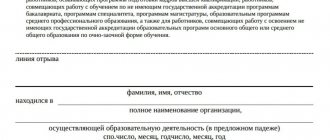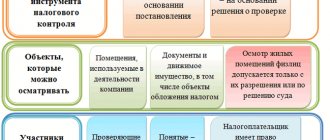Legislative regulation
Night work is ordered:
- Art. , 149, 154, 259 Labor Code;
- Art. 5.27 Code of Administrative Offenses of the Russian Federation;
- Resolution “On the minimum increase in wages for night work”;
- Resolution “On approval of the list of professions and positions of creative workers”;
- Industry agreements on the river fleet, radio-electronic industry, etc.;
- the Night Work Convention (not ratified, its provisions cannot be invoked in disputes on the territory of Russia);
- Collective agreement;
- Local legal acts.
The last two cannot contradict the Labor Code of the Russian Federation .
How to correctly create a work schedule every three days
The schedule is drawn up as a separate document. It has three important functions:
- control: the schedule helps to track the standard working hours for each employee;
- informative: from the schedule, employees learn about work shifts and days of rest, the beginning / end of working hours and rest time;
- coordinating: using the schedule, the work of employees is regulated.
It is better to draw up a schedule for the entire accounting period at once.
The schedule usually indicates:
- the period for which it was compiled;
- Full name and position of employees;
- distribution of working days during the month;
- other necessary information at the discretion of the employer.
The work schedule “in three days” might look like this:
Who is not allowed to work?
Night work is prohibited:
- Certainly (pregnant women);
- Conditional (children under 18 years of age, disabled people, women with small children, etc.).
Pregnant women
It is certainly prohibited for pregnant women to work from 10 pm to 6 am. Even if there is an application and readiness , the employer cannot leave a woman in such a job.
There are two alternatives:
- assignment to a similar job or the same one during the day;
- removal from work with the average salary remaining if the transfer is impossible.
The woman must bring proof of pregnancy . If she remains in her previous position, the employer may have problems, including paying a fine.
Children under 18 years old
Conditionally, night work is prohibited for children under 18 years of age, unless they are involved in the performance of performances or musical compositions (child actors, circus performers, etc.).
Women with small children
Women with small children are divided into three categories:
- With children under 3 years of age;
- With children under 5 years of age without a spouse;
- Guardians of children under 5 years of age.
Such workers are allowed to shift at night only if the woman has given her consent and there is a medical certificate allowing her to work . The employee takes advantage of the waiver of night work, and the manager is obliged to provide her with similar work.
Fathers with children under 5 years of age without a spouse are exempt from night work according to the same rules.
Disabled people
The employer will provide privileges for:
- people with disabilities;
- having disabled children;
- caring for sick relatives (not necessarily disabled people).
These groups must also give a written agreement and submit medical information. a conclusion that allows you to work at night. The employer acquaints them with the right of refusal against receipt. For other categories, consent is not required.
Sample of employee consent:
Duration and number of trips to work at night
According to Art. 96 of the Labor Code of the Russian Federation, working in the dark is permitted in accordance with the specialist’s main schedule and the benefits assigned to him.
The general rule is that the night shift is the performance of professional functions from 22.00 to 6.00 the next day. An employee can work partly at night, with the shift starting at 17.00 and ending at 01.00.
Although late shift hours can be reduced, this may not be possible for all groups of workers. The exceptions are:
- persons whose daily working hours have been reduced for certain reasons;
- citizens who have signed an employment contract that only mentions night shifts, for example, watchmen, security guards.
In accordance with Article 103 of the Labor Code of the Russian Federation, there is a possible maximum of night trips to work. It is 2 night shifts in a row.
Peculiarities
Enterprises themselves adopt acts that supplement the number of days off. According to the schedule, a portion of the time may be at night. Labor time is reduced by an hour, which does not need to be completed. The shift lasts without reductions if:
- working hours are already less than 8 hours;
- The position requires being at work at night.
The local enterprise act may contain different provisions from the federal ones, so before giving consent, you need to familiarize yourself with the act.
A night shift can be equal to a day shift if:
- This is a production necessity;
- Working shifts with only one day off during the week.
Internal agreements indicate forms of work where the night shift lasts the same as the day shift.
The laws of the Russian Federation do not stipulate how many night shifts can be worked per month.
The shift schedule or local rules of the organization establish the volume of shifts. The manager introduces these papers before being sent to the night shift.
The duration of rest after a night shift is not regulated by the Labor Code. In this case, the principle is universally applied: after a night shift there should be a rest duration equal to two shifts , i.e. If a person has worked 8 hours, he must rest for at least 16.
We comply with the standard working hours when drawing up a schedule every three days
The first thing an employer needs to pay attention to when drawing up a work schedule is compliance with standard working hours.
The work schedule “in three days” does not allow the employer to comply with the requirement of Art. 91 of the Labor Code of the Russian Federation to the normal working hours, which is no more than 40 hours per week. This problem can be solved by introducing summarized working time recording for such employees (Part 1 of Article 104 of the Labor Code of the Russian Federation).
In case of summarized accounting, the duration of working hours for the accounting period (month, quarter or other periods) should not exceed the normal number of working hours.
Summarized recording of working hours allows the number of actually worked hours in one day or one week to exceed the norm. This excess is compensated by reducing the number of working hours during other days or weeks within the reference period.
The duration of the accounting period is determined by the employer. By law, it cannot exceed:
- 3 months - to record the working time of employees engaged in work with harmful and (or) dangerous working conditions;
- one year for other employees.
The employer needs to monitor compliance with working hours twice: at the stage of drawing up the schedule and at the end of the accounting period. This is due to the fact that some periods reduce the standard working time (annual paid holidays, periods of temporary disability, business trips).
How to calculate hours on a timesheet?
The work schedule sheet can be filled out using forms or documents accepted by the organization. Time can be shown separately as evening and night. The columns contain alphabetic and numeric codes. For example, alphabetic: “N” or “B”, digital “2”. The leader can accept his conventional symbols, about which an order is issued.
Example of filling out a timesheet (clickable):
You can fill out the fields for each day. In the T-12 form, fill out columns 4-6, in T-13, fill out section 4. You can enter the code with a letter or number, and in the line below them - hours and minutes of work.
If an employee works in shifts, then he must:
- Add columns to samples T-12 or T-13;
- Enter operating hours using codes.
The accounting form developed by the company usually contains lines for the night and day periods .
You can take into account a work schedule that begins during the day and ends at night with fractional notations. The period of work is indicated in numbers through a line.
What to include in employment contracts and PVTR when introducing a schedule in three days
An employer cannot limit itself to just drawing up a work schedule “in three days.” The law requires adjustments to be made to the company’s local regulations and employment contracts with employees if such a regime is being introduced in the company for the first time.
The procedure for introducing summarized recording of working time is prescribed in the internal labor regulations (Part 4 of Article 104 of the Labor Code of the Russian Federation). If summarized accounting is introduced in a company for the first time, the employees affected by this must be notified in writing at least two months before the introduction of this form of accounting (Article 74 of the Labor Code of the Russian Federation).
The specifics of the work regime of employees hired to work every three days must be specified in employment contracts (Article 57 of the Labor Code of the Russian Federation). In particular, it needs to reflect (paragraph 6, part 2, article 57, part 1, article 100 of the Labor Code of the Russian Federation):
- length of the working week (working week with days off on a rotating schedule);
- the order of alternating working days and weekends (determined by the work schedule).
- duration of daily work, start and end times of work, time and duration of breaks in work;
- accounting period, if summarized accounting of working time is introduced (Parts 1, 2 of Article 104 of the Labor Code of the Russian Federation)
Template for wording in an employment contract:
If the employer belongs to micro-enterprises and has refused to adopt local regulations (including work schedules), all the necessary features of the “every three days” work schedule should be specified in the employment contract according to the standard form (Parts 1, 2 of Article 309.1, Art. 309.2 Labor Code of the Russian Federation).
Registration of night shifts
Internal rules and the shift calendar are the main documents that establish periods of night and day work.
If taken specifically at night or in shifts:
- introduce you to the regime;
- sign an employment contract.
If, when hiring, it was supposed to be carried out during the day, but then the company switched to a shift schedule:
- 30 days before entering the schedule, familiarize everyone with it and sign it;
- issue a transfer order.
Sample order to enter night time:
If the employee is part of a group for which work at night is conditionally prohibited:
- inform about the new schedule;
- inform under signature about the right of refusal;
- ask the employee for consent;
- Afterwards the employee provides medical care. conclusion about the possibility of working at night;
- an order is issued to transfer the employee to the appropriate schedule.
An employer may hide night shifts or not pay due wages . Then the workers go to court. Any evidence of night work is admissible in court, so it is often quite easy to prove. Increases in pay for work are not included in bonuses and other incentive payments.
Breaks in work when scheduled every three days
The second important nuance is the competent organization of the employee’s work. During working hours, he is entitled to food breaks and other regulated periods of rest, since without this, for 24 hours in a row, it is difficult for an employee to perform labor functions effectively and fully.
Labor legislation also provided for this nuance, stipulating the employer’s obligation to provide the employee with breaks for rest and food during the working day. This period of time is limited: no less than 30 minutes and no more than two hours per working day. These breaks are not included in working hours (Article 108 of the Labor Code of the Russian Federation).
Every employer is obliged to comply with the time limits provided for in Art. 108 Labor Code of the Russian Federation. The specific duration of breaks and the time they are provided within 24 working hours are prescribed in the PVTR. For example, you can set two breaks of 60 minutes, four breaks of 30 minutes, or some other combination of number and duration.
If, due to production (work) conditions, it is impossible to provide a break, the employer is obliged to provide the employee with the opportunity to rest and eat food during working hours (Article 108 of the Labor Code of the Russian Federation). A list of such work, as well as places for rest and eating are established in the PVTR.
Taking into account the above, with a work schedule of “every three days”, the employee’s time sheet may show either 24 hours (in a situation where there are no breaks excluded from working time due to working conditions) or a shorter period of time (for example, 22 hours, when the employee can be absent from work). places and two-hour breaks will not be included in working hours).





